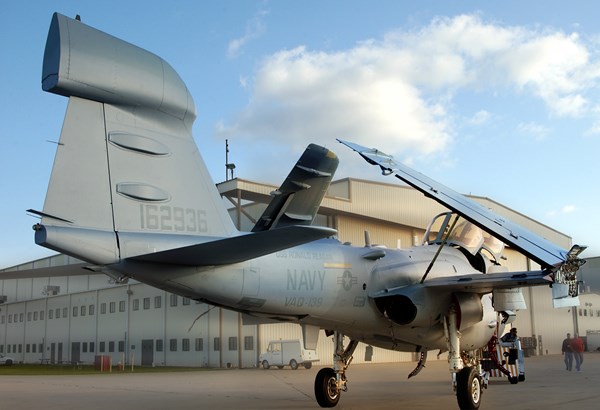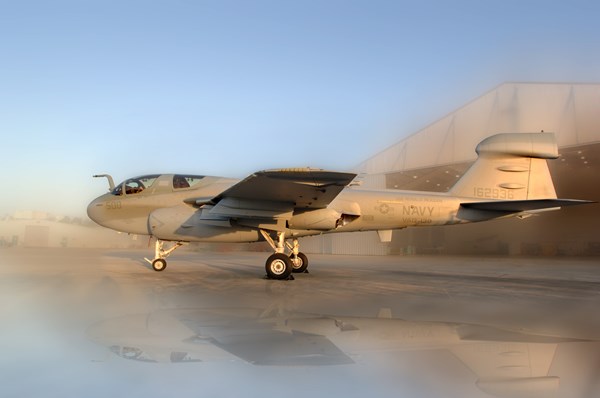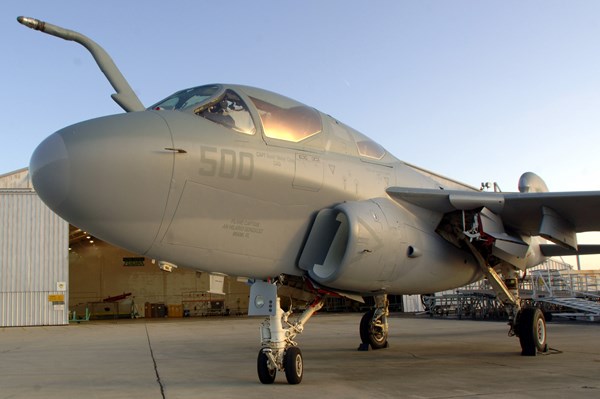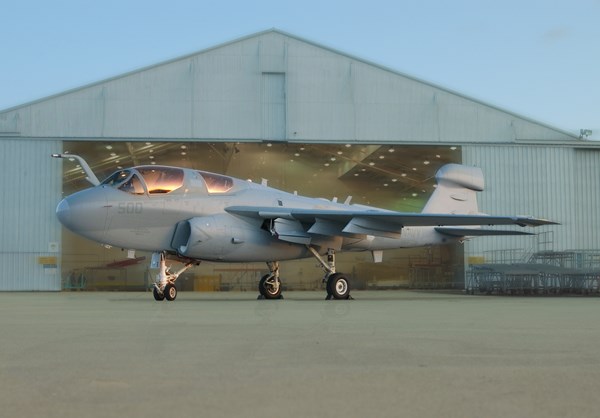ST. AUGUSTINE, Fla., April 26, 2005 (PRIMEZONE) -- Northrop Grumman Corporation (NYSE:NOC) and the U.S. Navy moved closer Monday to realizing the Navy's network-centric war-fighting vision with the joint celebration of the "keel-start" of the first E-2D Advanced Hawkeye test aircraft and the first deliveries of Improved Capability III EA-6B Prowler electronic-attack aircraft.
Photos accompanying this release are available at http://media.primezone.com/noc/
The ceremony at Northrop Grumman Integrated Systems' manufacturing center recognized both milestones as enabling elements of the broader Navy vision, Sea Power 21. Participants included Rep. John L. Mica, (R-FL) 7th District; Rep. Ander Crenshaw, (R-FL) 4th District; Rear Admiral David J. Venlet, program executive officer, Tactical Air Programs, Naval Air Systems Command; Scott Seymour, corporate vice president and president, Northrop Grumman Integrated Systems; and Philip Teel, sector vice president, Northrop Grumman Integrated Systems.
"The first fleet squadron is getting some flight time on this new ICAP III capability and I'm here to tell you they love it," said Adm. Venlet.
Separately, the E-2D Advanced Hawkeye airborne battle management system and the ICAP III Prowler airborne electronic attack aircraft are unique technological achievements. Together, the two program milestones marked today are a unified step closer to the U.S. Navy's goals in its Sea Power 21 vision.
"The Navy's vision of Sea Power 21 is also our vision," said Teel. "Some time ago we recognized that capable platforms are incredibly important to the future because there will be fewer of them, and that those capable platforms have to operate in a netted and integrated way."
When complete, the E-2D Advanced Hawkeye will mark a quantum leap in the Navy's ability to protect its fleet from the cruise-missile threat. With all its new capabilities, the aircraft will fulfill the role of carrier-based battle-management command and control. The ICAP III Prowler airborne electronic attack aircraft delivers an order-of-magnitude increase in effectiveness against increasingly sophisticated air defenses faced by the joint force and its capabilities are relevant to the continuing global war on terror.
"Each of these represents tremendous advances in combat capability for our warfighting customers," said Seymour. "But they truly are going to come alive in this netted environment. In fact, you almost think these systems were born for a network-centric environment."
Northrop Grumman is the only company with four decades of experience developing and currently delivering airborne electronic attack systems. The company's Integrated Systems sector developed the ICAP III selective-reactive electronic-attack system to defeat the increasingly sophisticated ground-to-air defenses that threaten our airborne strike forces. It also provides integrated communications-jamming capabilities and the ability to use the enemies' own electronic emissions to pinpoint and target their locations. The first ICAP III EA-6B squadron will be operational this summer.
The ICAP III EA-6B Prowler delivered Monday is the third built under the first low-rate initial production contract to modify 10 fleet Prowlers with the ICAP III system. Northrop Grumman expects imminent approval for full-rate production of the ICAP III system as current Navy plans include modifications to an additional number of fleet Prowlers intended for Navy and U.S. Marine Corps service.
Northrop Grumman is further developing ICAP III to be the mission system for the EA-18G, which will begin replacing the Prowlers in Navy service at the end of the decade. The Marine Corps will continue to operate the EA-6B ICAP-III as its only dedicated airborne electronic-attack aircraft well into the next decade.
Essentially a new aircraft, the E-2D Advanced Hawkeye will fundamentally differ from its E-2C Hawkeye predecessor. While the aircraft's outward appearance remains nearly identical, the mission system will be completely redesigned to accommodate new radar, antenna, workstations and displays, as well as a cockpit layout that includes a fourth mission-operator station in addition to the three in the rear of the aircraft.
The Northrop Grumman E-2D design team, which includes Lockheed Martin, BAE SYSTEMS, L-3 Randtron, Raytheon and Rolls-Royce, is working under a $2 billion system development and demonstration contract. The first test aircraft, whose keel-start was celebrated Monday, is one of two to be built under the contract. The second will be started later this year. Both will begin flight testing in 2007.
The E-2D will be a key node in the Navy's network-centric warfare architecture -- FORCEnet -- and essential to the Navy's requirement for a single, integrated air picture. The Navy is planning for a program buy of 75 new E-2Ds. Production is scheduled to begin in 2010.
Northrop Grumman Integrated Systems, headquartered in El Segundo, Calif., is a premier aerospace and defense systems integration enterprise. As one of Northrop Grumman Corporation's seven sectors, it designs, develops, produces and supports network-enabled integrated systems and subsystems for U.S. government, civil and international customers. Integrated Systems delivers best-value solutions, products and services that support military and homeland security missions in the areas of intelligence, surveillance and reconnaissance; battle management command & control; and integrated strike warfare.



